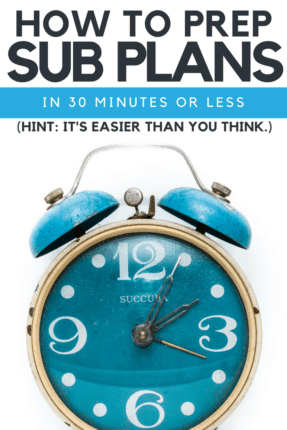5 Simple Tips for a Better Substitute Experience
I used to dread planning for a substitute teacher. I will be the first to admit that I have been at work on days when I probably should not have left my bed. I’ve also been at work at 5 AM preparing emergency sub plans.
Why is planning for a substitute teacher so much work?
Of course, planning for a sub teacher often isn’t the worst part!
How many times have you come back to the 2-page note about how horrible your class behavior was? Or even worse, had the substitute walk out halfway through the day?
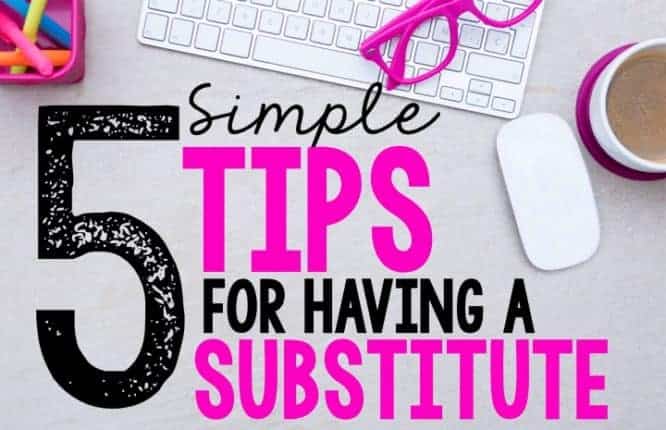
Substitute teaching is hard! Your guest teacher walks into a classroom already the odd woman (or man) out. Then they are required to:
- Execute lesson plans they didn’t write or see in advance
- Keep students on-task when they don’t have relationships
- Maintain engagement with students they don’t know
- Monitor behavior for pennies on the hour
The list goes on and on. I mean, seriously, good subs should earn AT LEAST twice what they are paid. So how can we ease the burden on a substitute and save our own sanity at the same time?
Here’s How to Effectively Plan for a Substitute
Your plate is full and you’ve got lots of other things to do. However, I recommend sitting down and devoting an hour or two at the beginning of the year to getting yourself organized for your first sub. Here are 5 quick tips to make having a substitute a better experience.
1. Do your research to be sure you snag the best subs
Most school districts have a database of approved substitutes ready to go. However, that list is likely long and includes many individuals that you may not want in your classroom. That’s what you want to spend some time talking to teachers on your campus and the office staff.
Most likely, your campus has a list of preferred subs. These are the people who your administrators call on regularly in situations where a high-quality sub is needed. They may be former staff members who have since retired or just familiar faces who have a reputation for being excellent with students.
That being said, if you are new to the campus (or remarkably healthy and non-PD bound), you might not be familiar with the list. That’s why it’s important to start asking around early. You can also start watching for substitutes you see on your campus to see consistently on campus week after week.
Chances are if your colleagues call in the same substitute frequently that substitute is good. At a bare minimum, they are already familiar with the campus and general expectations and your students have probably seen them before. both of these are HUGE positives.
2. Don’t be afraid to show your sub a little appreciation.
Everyone likes to be appreciated. When you get a good sub, don’t be afraid to leave a small token of appreciation for the hard job they are doing. A piece of chocolate, $5 Starbucks card, or just a quick handwritten note are all perfect.
This is especially true those years when you have an especially challenging class or you might not have had much time dedicated to planning for a substitute teacher. If you’ve expected your sub to go above and beyond the normal call of duty, a little thank you can go a long way and it doesn’t have to cost you much at all.
The idea isn’t to spend a ton of money. It is to let this person know how much you appreciate being able to stay home without stressing about your classroom while you’re out.
Update 2021: A number of you have followed up regarding concerns about this idea, and I agree with you. You’re totally right. You shouldn’t HAVE to do this. You should be able to take your days off guilt-free without leaving your sub a little chocolate.
That being said, a little kindness goes a long way. Why not model the behavior we wish we could see more toward educators?
3. Prepare in advance and keep your emergency sub plans handy.
Planning for a substitute teacher in case of an emergency is a requirement in our district, but I learned early on if no one can those emergency sub plans in an emergency they serve no purpose.

Create a spot for your plans and let EVERYONE know where you keep them. Make sure they are so clearly labeled that your students could come to grab them and hand them to the sub in case of emergency.
I like to do the majority of my sub planning in the summer. I create my sub tub (clearly labeled) with a folder for each month. Then I create my sub binder once I get my student information, and I’m set for the year.
What’s do you put inside your sub folders & binder?
Inside each folder is a set of plans designed to last 1-2 days and any printables that go with the lesson plans. Once I have my class list and know my students a little bit, I add some general information pages to the folders. These contain information the sub might need about different student needs, possible issues that might arise and how to manage them, and any other things that are particular to that class. From then on I am good to go.
If you want to know more about my sub binder you can reading this article and get a free copy of my templates here:
4. Stop filling your sub plans with boring worksheets.
You know what makes students lose their minds faster than anything? A full day of boring worksheets and packets.
Being a substitute is already hard enough. If the goal is for students to have an engaging and productive day, why are we leaving them work that is not engaging? Of course, there might be some review work or paper-pencil tasks. But if all you leave is boring work, misbehavior is a guarantee.
If the work doesn’t engage them, they will find something else that will…even if it is poking their neighbor with a pencil or humming loudly. This is one of the big reasons students misbehave for the sub!
When I create sub plans, I work hard to incorporate these elements into the lessons:
- at least one opportunity to be creative
- a gross and fine motor activity
- a lesson that includes partner work
- a small group activity
Since I set up my sub plans in summer, I structure all the months with the same format so my students become familiar with the expectations and routines when we have a sub. You can see an example of my format below:
Each month contains lessons that connect with common themes to that month – like holidays or special events. For example, the math practice above is from my space-themed plans.
The reading is an engaging picture book and foldable, and it connects to writing. This gets students thinking, talking, and lets them break out the scissors and crayons while practicing some important comprehension skills.
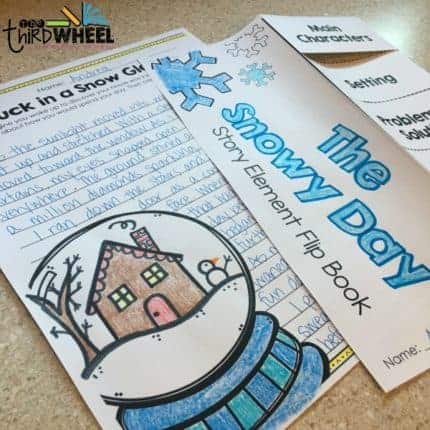
I also always build in a no-prep/low-prep STEM challenge. The students need some less-structured time that won’t get too out of hand for a substitute. The kids love this opportunity, and it doesn’t take too much prep.
For example, my STEM challenge in January involved students making paper snowflakes and involved exploring how the shape of their cuts changed the outcome.
The kids had a blast and I was able to hang the snowflakes to make sure fun January decorations when I returned.

To help with behavior, I always create a list of groups in advance to help avoid any personality conflicts.
I also warn students that if their behavior isn’t good there may not be another STEM challenge when we have subs in the future.
Students stay engaged with these interactive learning activities, and the idea that they may lose them for poor behavior is really motivating.
If you’re short on time or planning for a substitute teacher seems too overwhelming, I’ve created print & go lessons for subs that you might like.
Click on any grade level below for more info:
5. Encourage Positive Feedback From Your Substitute
I get more than my fair share of challenging behaviors because of my strong classroom management plan. However, when a substitute is there things tend to fall apart a bit.
I receive more than my fair share of not-so-great notes as a result. Talk about a depressing way to return to the classroom.
To remedy this issue, and save my sanity, I started leaving a feedback template for subs to fill out.
I purposefully structured the top section to include specific positive feedback because even on the worst day, I know there are always some students in the class making the right choice.
I want to be sure I am recognizing these kids. Here’s what it looks like:
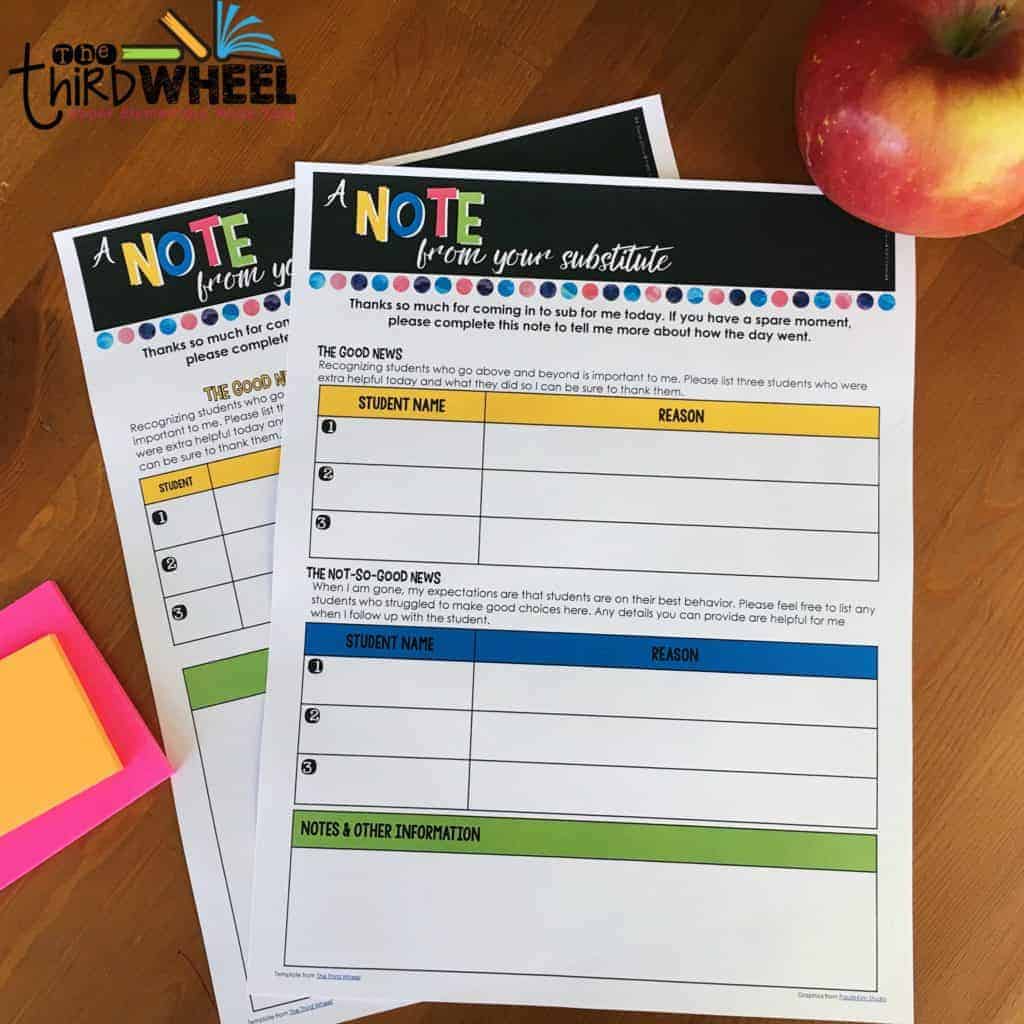
I discovered this helped me look for the good, and I got fewer negative notes. There are always a few students who test out the limits.
I feel like this really encouraged the sub to look for the positive, even on those rough days.
Related Posts:
Substitute Success – How to Simplify Having a Sub
The Secret to Getting More Done with Parent Volunteers
How to Stop Tattling with One Easy Lesson
Planning for a substitute teacher may seem like a lot of work, but it’s well worth the time and effort. To get started, grab a copy of the templates above for free below.
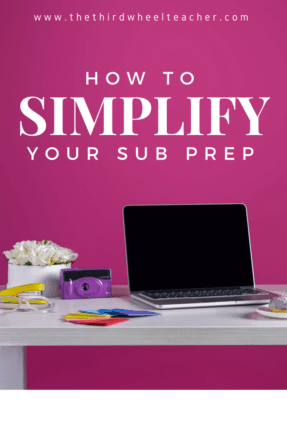
I hope this article gave you some ideas when you are planning for your next substitute.
If you’d like more ideas from The Third Wheel, be sure to follow me on Teachers Pay Teachers, Facebook, Pinterest, or Instagram to keep up to date and on the latest tips, tools, and freebies for your classroom.








